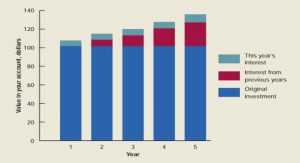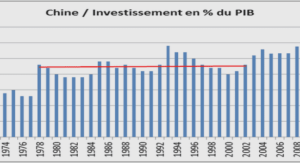Résolution de quelques problèmes aux limites d’ordre fractionnaire par la méthode de sous et sur solutions
Fixed point theorems
Fixed point theory is an important topic with a big number of applications in various fields of mathematics. The fixed point theorems concern a function f satisfying some conditions and admits a fixed point, that is f(x) = x. Knowledge of the existence of fixed points has pertinent applications in many branches of analysis and topology. Following if the conditions are imposed on the function or on the set, different fixed point theorems are given, we cite the following. Theorem 18 (Banach contraction principle) Let T be a contraction on a Banach space X. Then T has a unique fixed point. Theorem 19 (Schauder fixed point theorem) Let Ω be a nonempty closed bounded and convex subset of a normed space. Let N be a continuous mapping from Ω into a compact subset of Ω, then N has a fixed point in Ω. Theorem 20 (Krasnoselskii fixed point theorem) [42]. Let Ω be a closed bounded and convex nonempty subset of a Banach space X. Suppose that A and B map Ω into X such that (i) A is continuous and compact. (ii) B is a contraction mapping. (iii) x, y ∈ Ω, implies Ax + By ∈ Ω. Then there exists x ∈ Ω with x = Ax + Bx. The criteria for compactness for sets in the space of continuous functions C([a, b]) is the following. Theorem 21 (Arzela-Ascoli theorem). A set Ω ⊂ C([a, b]) is relatively compact in C([a, b]) iff the functions in Ω are uniformly bounded and equicontinuous on [a, b] We recall that a family Ω of continuous functions is uniformly bounded if there exists M > 0 such that kfk = max | x∈[a,b] f(x)| ≤ M, f ∈ Ω. The family Ω is equicontinuous on [a, b] , if ∀ ε > 0, ∃δ > 0 such that ∀t1, t2 ∈ [a, b] and ∀f ∈ Ω, we have |t1 − t2| < δ ⇒ |f(t1) − f(t2)| < ε. The criteria for compactness for sets in the space of integrable functions L p (0, 1) is the following. Lemma 22 [6]. Let F be a bounded set in L p (0, 1), 1 ≤ p < ∞. Assume that (i) lim |h|→0 kτ hf − fkp = 0 uniformly on F, (ii) limε→0 R 1 1−ε |f (t)| p dt = 0, uniformly on F. Then F is relatively compact in L p (0, 1). Where τ hf (t) = f (t + h). The following theorem gives a necessary and sufficient condition for a set of functions to be relatively compact in an L p space. Theorem 23 (Riesz-Kolmogorov). Let F be a bounded subset in L p (R n ), 1 ≤ p < ∞, The subset F is relatively compact if and only if the following properties hold. 1. limx→0 R Rn |f(y + x) − f(y)| pdy = 0 uniformly on F. 2. limR→∞ Z |x|>R |f (x)| p dx = 0 uniformly on F
Stability of solutions
Recently, several methods are introduced to study the stability of nonlinear fractional differential equations, but most of them are devoted to the case 0 < α < 1. We can cite the Mittag–Leffler stabilities, Ulam stability, generalized GronwallBellman inequality… However, when the fractional order is greater than one, it is difficult to apply these methods and finding another effective method to investigate the stability of nonlinear fractional differential equations is actually the purpose of many research works. Let us consider in the Banach space X the differential equation dx dt = f (t, x), t0 ≤ t < ∞ (1.1) where f : [t0, ∞) × X → X. Definition 24 [13] A solution x = ϕ (t) of equation (1.1) is said to be stable if for any ε > 0 and any t1 ≥ t0, there exists δ > 0 such that every other solution x = ψ (t) defined in a neighborhood of t1 and satisfying kϕ(t1) − ψ(t1)k < δ, exists for all t ≥ t1 and satisfies kϕ(t) − ψ(t)k < ε, ∀t ≥ t1. A solution x = ϕ (t) of equation (1.1) is said to be uniformly stable if the constant δ can be chosen independly of t1 ≥ t0. A solution x = ϕ (t) of equation (1.1) is said to be asymptotically stable if it’s stable and for any t1 ≥ t0, there exists δ > 0 such that kϕ(t1) − ψ(t1)k < δ implies limt→+∞ kϕ(t) − ψ(t)k = 0. Remark 25 Note that by setting y (t) = x (t) − ϕ (t), where ϕ (t) is a solution of equation (1.1), the study of the stability of a solution can be reduced to the investigation of the stability of the zero solution of an auxiliary equation.
POSITIVE SOLUTIONS FOR A MULTIPOINT FRACTIONAL BOUNDARY VALUE PROBLEM WITH INTEGRAL CONDITIONS
Fractional differential equations as generalization of differential equations of integer order can modelize many phenomena in different fields of applied sciences and engineering such as viscoelasticity, rheology, thermodynamics, biosciences, bioengineering, etc. Several methods are involved in the study of the existence of solutions, one can quote the upper and lower solutions method, the theory of Mawhin and the method of successive approximation …. In particular, some fixed point theorems, such Banach fixed point theorem, Schauder fixed point theorem, Leray-Schauder fixed point theorem and Guo-Krasnoselski theorem are used in the study of the existence of solutions or positive solutions for boundary value problems for nonlinear fractional differential equations, see [1,4,15-19, 21-23,31-36,42,46,48,52,54-56]. Furthermore, the use of the upper and lower solutions method provides information on the existence and localization of solutions. In [45], Liang et al. studied by means of lower and upper solutions method and Schauder fixed point theorem the existence of positive solutions for the following problem D α 0+ y + f (t, y) = 0, 3 < α < 4, 0 < t < 1, y (0) = y 0 (0) = y 00 (0) = y 00 (1) = 0. Chen et al in [10], investigate the existence of multiple positve solutions for the following fractional boundary value problem D α 0+ y + f (t, y) = 0, 2 < α < 3, 0 < t < 1, y (0) = y 0 (0) = y 0 (1) = 0. By the properties of the Green function, the lower and upper solutions method and Schauder fixed point theorem, the authors proved the existence of at least one positive solution. Then using Leggett Williams fixed point theorem, they showed 24 the existence of multiple positive solutions. This chapter concerns the existence of positive solutions for the following boundary value problem for nonlinear fractional differential equation. D α 0+ y (t) + f (t, y (t)) = 0, n − 1 ≤ α < n, 0 < t < 1 (2.1) y (i) (0) = 0, i = 0, …, n − 2, y (1) = Xm k=0 λk Z ηk 0 y (s) ds, (2.2) where f ∈ C ([0, 1] × R, R+) is a given function, n ∈ N, n ≥ 2, 0 < ηk < 1, λk > 0, ∀k = 0, …, m. Firstly we solve the linear problem, then we construct the lower and upper solutions. By Schauder fixed point theorem, we establish the existence of at least one positive solution for the boundary value problem (2.1)-(2.2) lying between these two functions. The obtained results are illustrated by an example.
1 Preliminaries |




